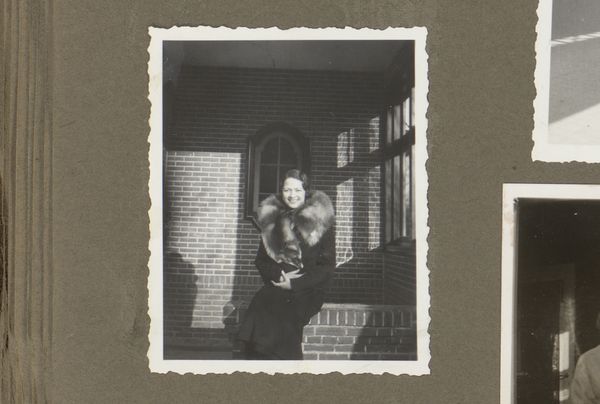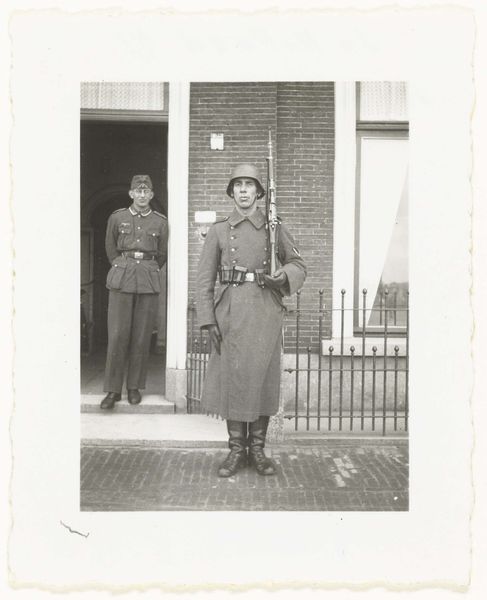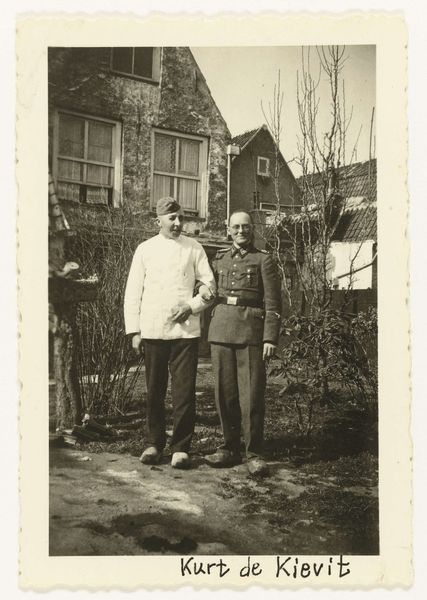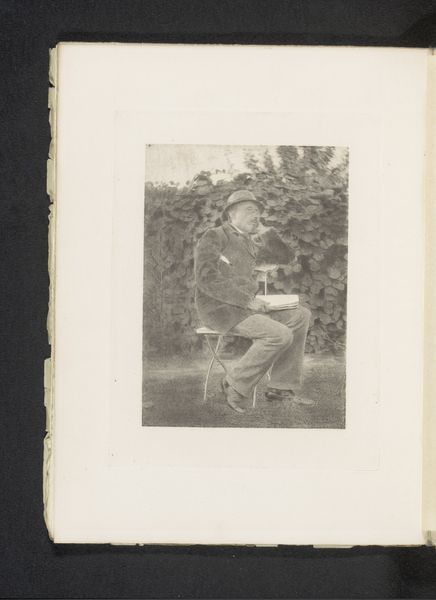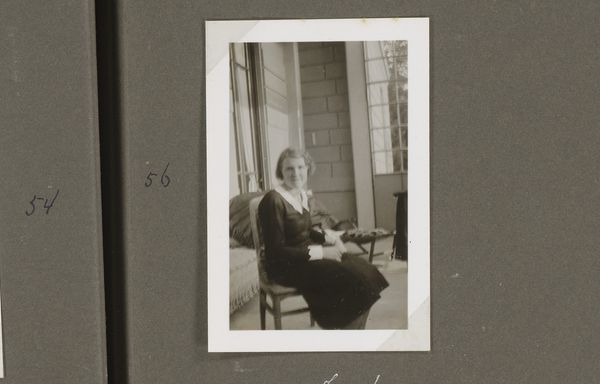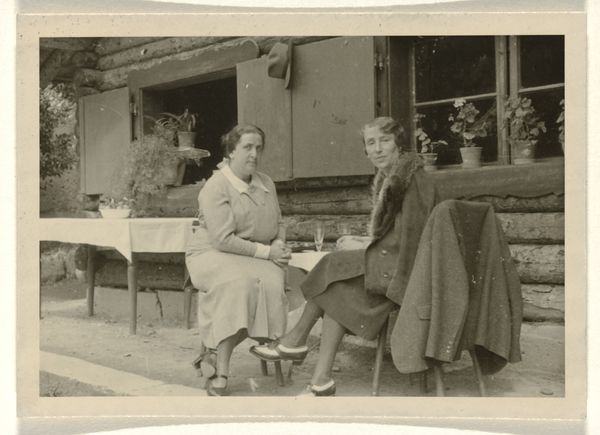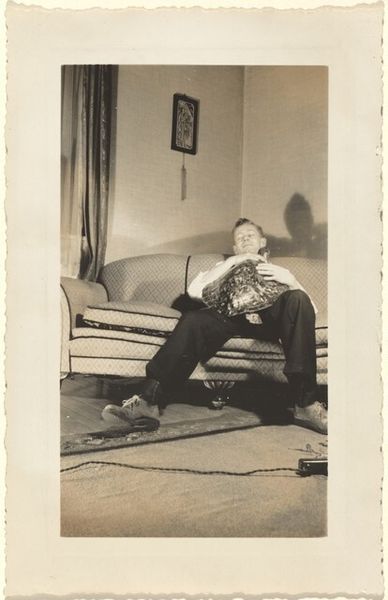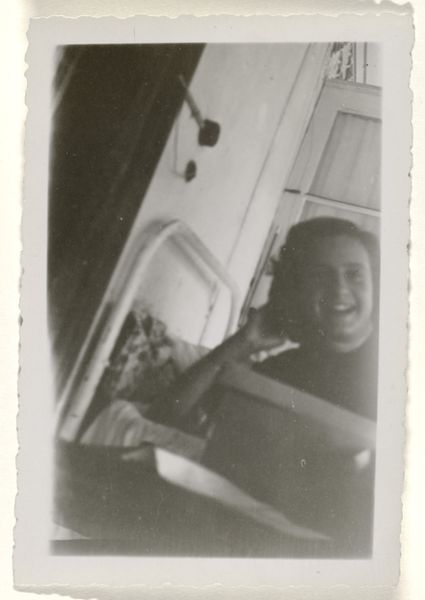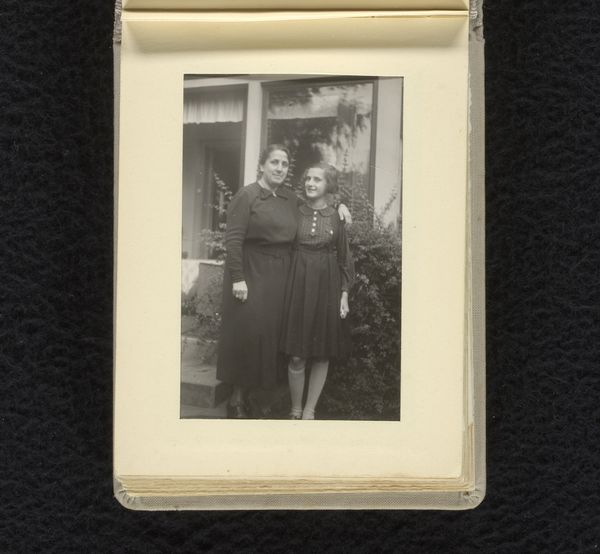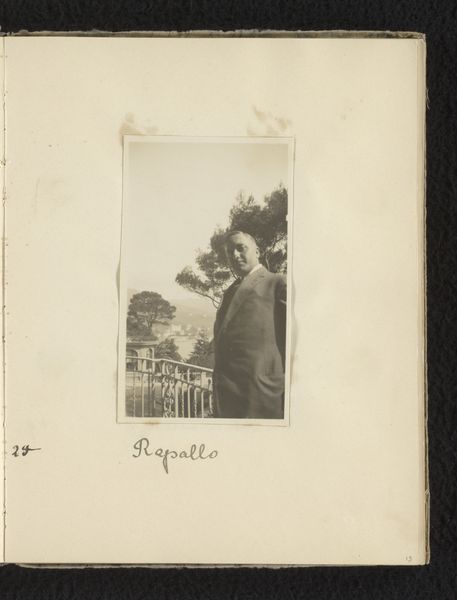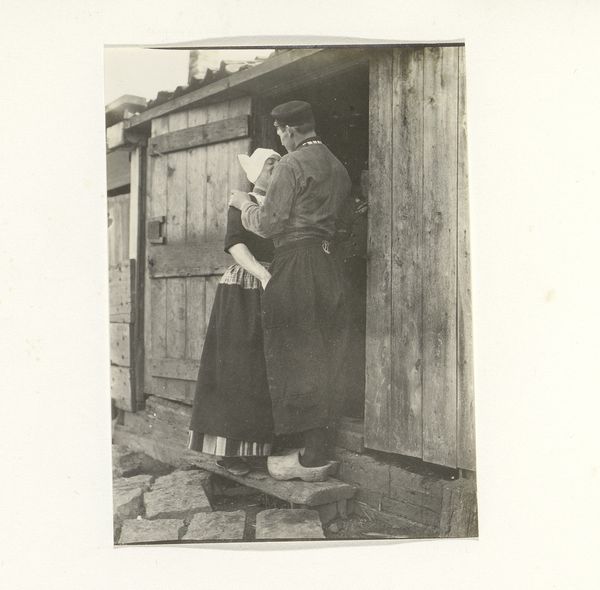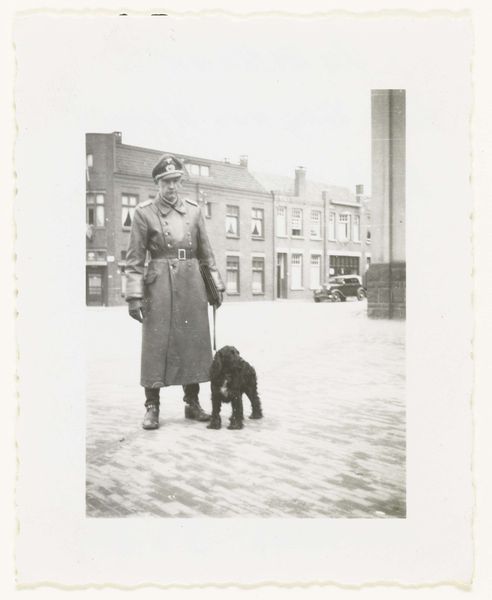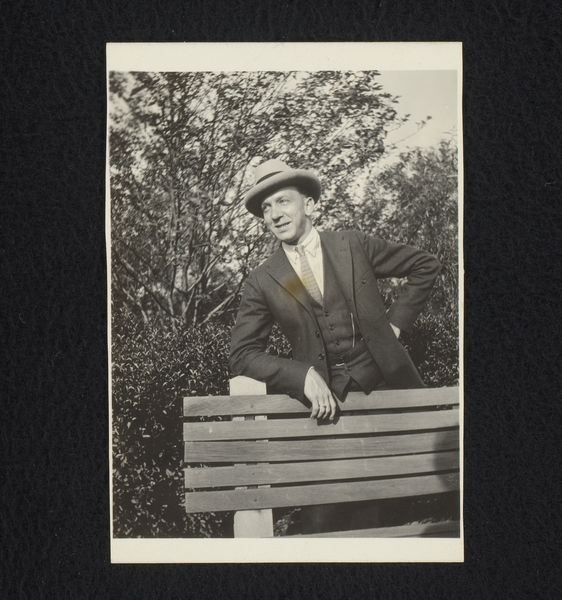
photography, gelatin-silver-print
#
portrait
#
print photography
#
photography
#
historical photography
#
gelatin-silver-print
#
genre-painting
#
realism
Dimensions: height 8.5 cm, width 6 cm
Copyright: Rijks Museum: Open Domain
Curator: Here we have an anonymous gelatin-silver print, "Duitse soldaat met oudere vrouw met kopje koffie", estimated to be from 1941 to 1943, here on display at the Rijksmuseum. Editor: It's strikingly composed, this portrait. The light catches the older woman’s face, highlighting a hesitant smile, but the visual weight leans heavily on the soldier's uniformed presence. The texture of the brick juxtaposed against her soft clothing and clogs really emphasizes their differing positions, too. Curator: Indeed, the photographer’s arrangement subtly stages a meeting during wartime. It compels viewers to confront not just individual interactions but the broader dynamics of occupation. The woman’s offering of coffee speaks volumes about survival under Nazi rule. Editor: Semiotically, the coffee cup reads as a precarious symbol of normalcy, almost of defiance, while his attire embodies power and control. The placement near the window further enhances the symbolic play between interior safety and external threat. Curator: Considering the social context of the time, such scenes were often heavily policed or propagandized. A photograph such as this could signify several different, competing narratives depending on whose hands it fell into, raising questions of authorship and intent. Editor: That's right; every detail from the window flowers to the German soldier seated comfortably at this Netherlandish house becomes deeply politicized. It represents cultural and psychological layers beneath everyday life, reflecting the uneasy coexistence. Curator: Do you see any aesthetic techniques in play, something in terms of photographic composition, which amplify these elements? Editor: Well, the grainy texture lends itself beautifully to the sense of reality – of historical documentation. Beyond the composition of vertical lines, this adds considerable weight to its impact as a form of portraiture and the subjects themselves. The greyscale really makes this an almost unsettling composition to behold. Curator: That's a astute reflection of the work. As you have remarked, the picture's value now lies beyond immediate artistic appreciation; rather in sparking ongoing societal introspection and questions related to power structures. Editor: Yes, now it is understood as a valuable historical artifact rather than an average wartime photo.
Comments
No comments
Be the first to comment and join the conversation on the ultimate creative platform.
